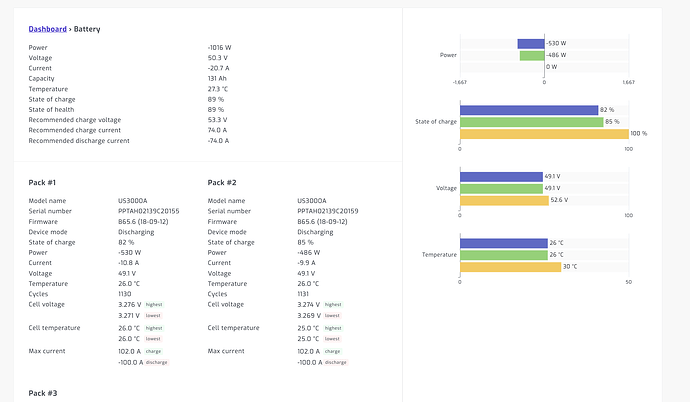Individual SOC is not available via the standard can-bms protocol, so won’t be on modbus, VRM, or anywhere on the GX. You need to use a different kind of software to talk directly to the BMS (probably over the console port?) to get that info.
Indeed! This was tracked using the console port and Real-time solar monitoring from a Raspberry Pi | SolarAssistant Software (solar-assistant.io)
Bit overkill, since I’m only using it for the battery information, but I managed to snag a license years ago when he started development (ex colleague of mine - he’s a good developer).
In Home Assistant (via MQTT)
In Solar Assistant itself (locally on a Pi)
Hi all,
Just an update on this - my Pylontech battery was eventually returned to SegenSolar and put through the RMA process.
They found a swollen cell and asked me if I wanted a replacement or cash back. I took the replacement - currently waiting for the new one to come back.
This was the battery with the high cell voltages as well as the massive SOC dips recently. The other two have been running my house since, and other than the fairly low 89% SOH (at least in my books) they’ve not given me any issues.
Will update once I have the new one installed!
@JacoDeJongh thanks for the help on this! If there were any fuss from Segen/Pylontech I never knew about it ![]()
@Eskom thanks for keeping the lights on just before the election so that I could replace my battery ![]()
Got the new battery (actually about 2 weeks ago already - I’ve been busy) and installed it as the new primary battery yesterday.
So far running well. Didn’t need to upgrade firmware or anything of the sort, just had to make sure the 3000C is the new one.
Haven’t had a high voltage alarm since I took out the old battery.

